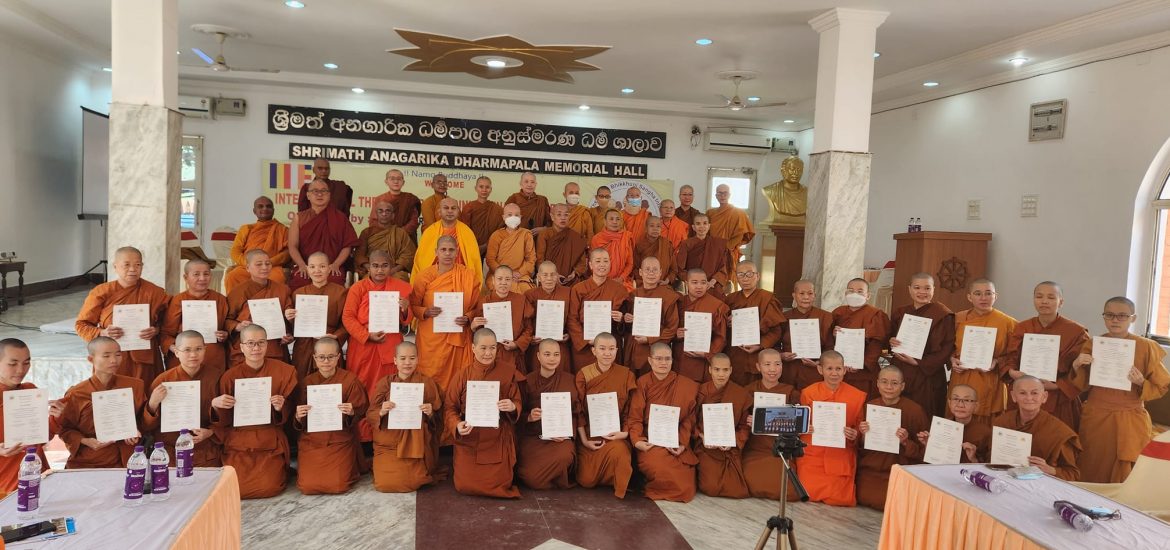Bhikkhuni (Sanskrit: bhikshuni) ordination in the Theravada and Vajrayana traditions, as an endeavor for equal recognition and authority for women in their monastic institutions, is in a curious place, once only dreamed of in our lifetimes. The year of 2022 now sees all three ancient Vinaya-based Buddhist monastic lineages with bhikkhunis existing once again. There are those who insist that no Pali-text-based bhikkhuni ordinations are legal because they are not possible per Vinaya. But by simple fact, we see with our own eyes the existence of thousands of Buddhist monastic renunciate women, fully ordained as bhikkhunis, practicing in Theravada traditions around the world.
The old narrative of the “extinction” of the bhikkhuni Order, and ongoing “attempts” to “revive” it, is outdated in multiple respects. November’s milestone ordination event by the United Theravada Bhikkhuni Sangha International (UTBSI) demonstrates that there is a standard for a tried, tested, and true model of Theravada dual bhikkhuni ordination which satisfies all requirements for fidelity to the Vinaya perspective of monastic law. Yet this remains contentiously debated, or more often simply categorically denied, by the highest echelon of Theravada Buddhism, on the supreme seats of the Theravada monastic sangha and secular leadership in South and Southeast Asia.
The Mulasarvastivada question (the ancient Savakayana canonical Vinaya that was developed by early Buddhists and formed the tradition adhered to by most Tibetan and Himalayan Buddhists), as far as I can see, has pretty much been answered. Thanks to the bhikshuni vows conferred on 144 women renunciates of Himalayan monastic traditions on 21 June 2022 in Bhutan, the gelongma exist and there is no going back. If we turn our attention to the Theravada world; it has made unique strides in progress thanks to several key groups and individuals. Throughout the month of November, the UTBSI organized its first international ordination of Theravada bhikkhunis in Bodh Gaya in partnership with the Maha Bodhi Society of India (MBSI). Previous Bodhgaya ordinations were held decade by decade in 1998, 2009 and 2019; this was the first international Theravada bhikkhuni ordination in Bodhgaya to be held in less: a sign of a new emerging momentum, capacity and united dedication among bhikkhu and bhikkhuni leaders.
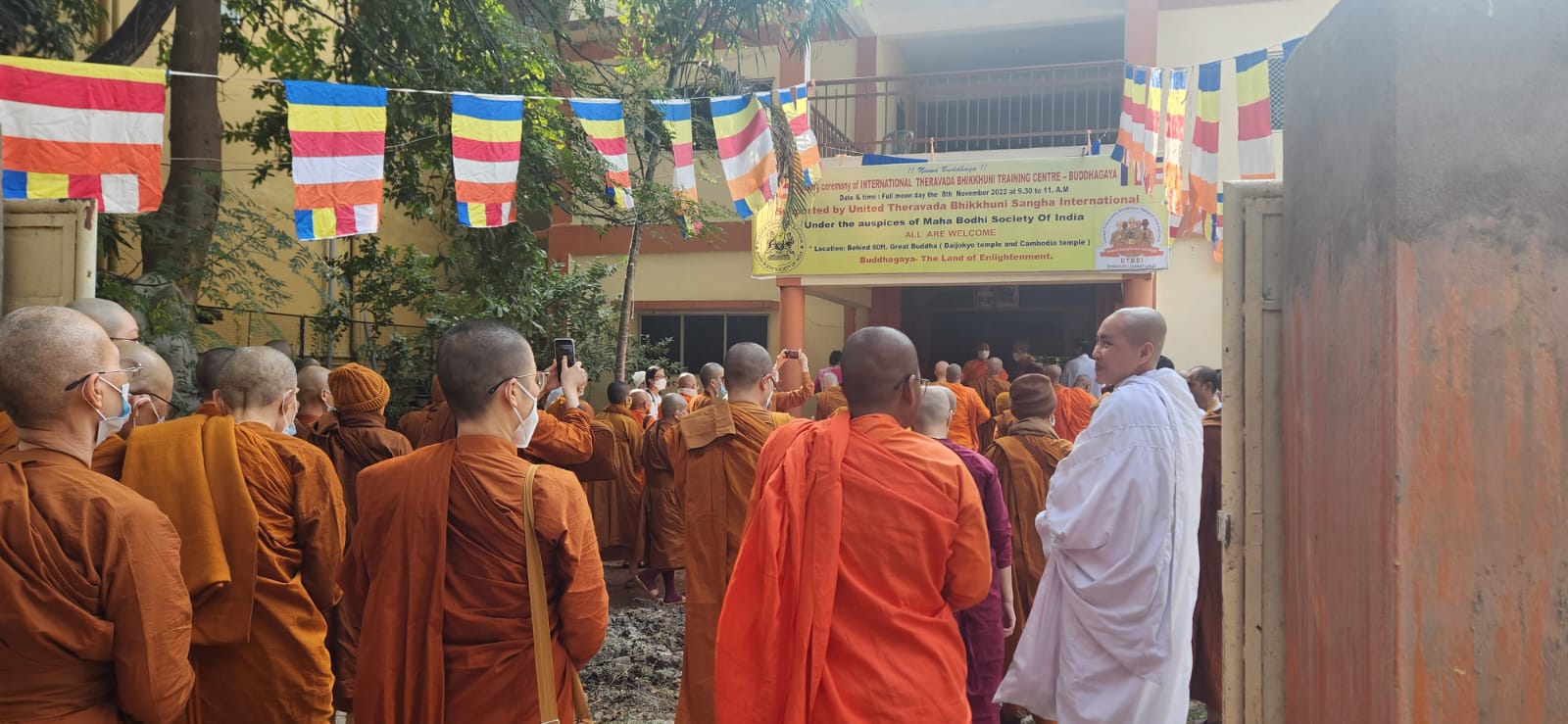
The schedule involved a rich and packed timetable of steps that led up to the ordinations themselves. First, from 6 to 10 November, the prospective ordained women engaged in training, study, and exams. On the auspicious full moon on November 8th, all gathered for the Opening Blessings for International Bhikkhuni Training Center Buddhgaya, a first for the international Theravada Bhikkhuni Sangha in India. Upon completion of the pre-ordination training, all candidates who passed their written and oral exams requested and received full dual Bhikkhuni Ordination from the Bhikkhu-Bhikkhuni Sangha from November 11th to the 12th. An International Bhikkhuni Seminar was also held from the 13th to the 14th, which opened with a special “Mahatheris Felicitation” program.
Established one year ago, UTBSI was founded by several of the most prominent and influential groups that have made a consistent difference in reviving the Theravada Bhikkhuni Sangha internationally. Founding UTBSI coordinators include established bhikkhu and bhikkhuni leaders representing India, Sri Lanka, Thailand, Vietnam, Indonesia, Malaysia, and Australia, as well as North America and Europe. In preparing this article, we checked in with one of UTBSI’s co-founding coordinators, Ven. Bhikkhuni Tathaloka Mahatheri, founding abbess and preceptor of the Dhammadharini Monastery in the Sonoma Mountain area of the San Francisco North Bay and the Aranya Bodhi Awakening Forest Hermitage on the Sonoma Coast in Northern California, and a cofounder of the Theravada Bhikkhuni Association of North America. In her collaborative work with UTBSI, she has served as the initial regional UTBSI coordinator for North America and Europe, and coordinator of “Bhikkhuni Sangha History/HerStory & Heritage”.
“UTBSI celebrated its first anniversary on 19 November. The organization’s founding was inspired by the last International Bhikkhuni Ordination in Bodhgaya in 2019, which I joined in for and wrote about on BDG’s blog,” she told me. “I was not able to join for this one in person for health reasons, but I was on the organizing committee and the teaching team.”
The senior monastic preceptors for the ordination on the Theravada Bhikkhu Sangha side included:
- Most Venerable P Seewalee Nayaka Maha Thero, General Secretary of the Maha Bodhi Society of India and Chief Sangha Nayaka of India for Sri Lanka
- Most Venerable B Saranankara Nayaka Maha Thero, Chief Judiciary Monk of Malaysia for Sri Lanka
- with additional senior bhikkhu instructors from Sri Lanka and Malaysia
Senior monastic preceptors on the Theravada Bhikkhuni Sangha side included:
- Venerable Bhikkhuni Santini Maha Theri, Chief Bhikkhuni of Bhikkhuni Sangha Theravada Indonesia, Abbess of Vihara Kusalayani of Indonesia
- Venerable Bhikkhuni Viditadhamma (Lieu Phap) Maha Theri, Secretary of UTBSI, and Abbess of Sunnata Bhikkhuni Arama of Vietnam
- with senior bhikkhuni instructors and examiners from Thailand, Indonesia and Vietnam
Recipients of the November 11th-12th International Bhikkhuni Ordination in Bodhgaya included 31 bhikkhunīs from Vietnam, India, Malaysia, Australia and Thailand, who received dual bhikkhunī upasampadā (higher ordination) from Theravada bhikkhu and bhikkhuni sanghas, and 3 sāmanerīs from Malaysia, Australia, and Cambodia, who received the sāmanerī pabbajjā (going forth as a woman samana in-training) and sāmanerī sikkhā (The Ten Novice Training Precepts) from a bhikkhuni preceptor in the presence of more than 50 international Theravada bhikkhunis. During the International Bhikkhuni Seminar hosted by the Maha Bodhi Society of India – Bodhgaya, four Mahatheris (senior bhikkhunis of more than 20 Vassas) were awarded and felicitated:
- Bhikkhuni Tathaloka Maha Theri herself, (with 25 Vassas)
- Bhikkhuni Santini Maha Theri, seniormost Theravada bhikkhuni of Indonesia (with 23 Vassas)
- Bhikkhuni Viditadhamma Maha Theri, seniormost Theravada bhikkhuni of Vietnam (with 21 Vassas)
- Dhammananda Maha Theri, seniormost bhikkhuni of Thailand and newest Mahatheri (with 20 Vassas)
All four of these Mahatheris served as training teachers for the Bodhgaya ordination; with two, Ven. Santini Mahatheri and Ven Viditadhamma Mahatheri, serving as the leading bhikkhuni preceptors (pavattini-upajjhaya), as above.
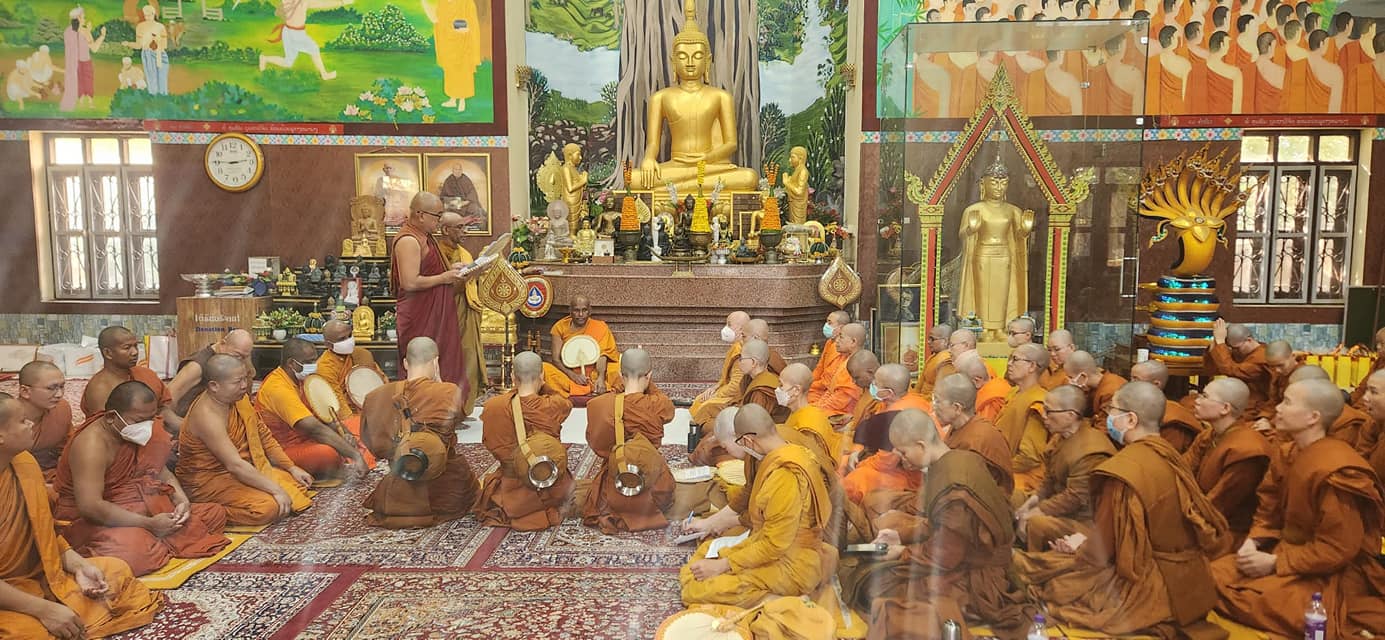
This is especially important because a critical and persistent argument against the ordination of Theravada bhikkhunis has been that there are no senior Theravada bhikkhunis needed to guide, lead, train and ordain aspiring women. Ven. Tathaloka observed that, “The Mahatheri (also written Maha Theri), is by definition a senior bhikkhuni, with more than 20 Vassas as a Bhikkhuni. The existence of the Mahatheris now speaks to what has been the greatest and most common objection to the revival of Theravada Bhikkhuni Ordination, that is, the absence or lack of Mahatheris, that is, senior bhikkhuni mentors, preceptors and teachers.”
Sometimes there is a cultural disconnect, between the fact of the re-established Theravada (and now Mulasarvastivada) lineages, and the regions in which they move. Many milieus within Theravada Buddhist cultures remain informed by pervasive patriarchy, institutional sexism, and residual scepticism about the legitimacy of recent ordinations of women (including in respectable and prestigious institutions of influence like academia or monasteries). Many may not know or be willing to consider that these recent ordinations have been exhaustively planned and executed in perfect fidelity to the Vinaya, the basis of their legitimacy. The ordination script and its concordant Sangha actions (Kammavidhi and Sanghakamma) have come straight from the canonical Pali-text Vinaya.
For some, it may just still “feel” different. We know what these people are thinking. The old adage “How the law is supposed to work versus how it actually works” may be relevant.
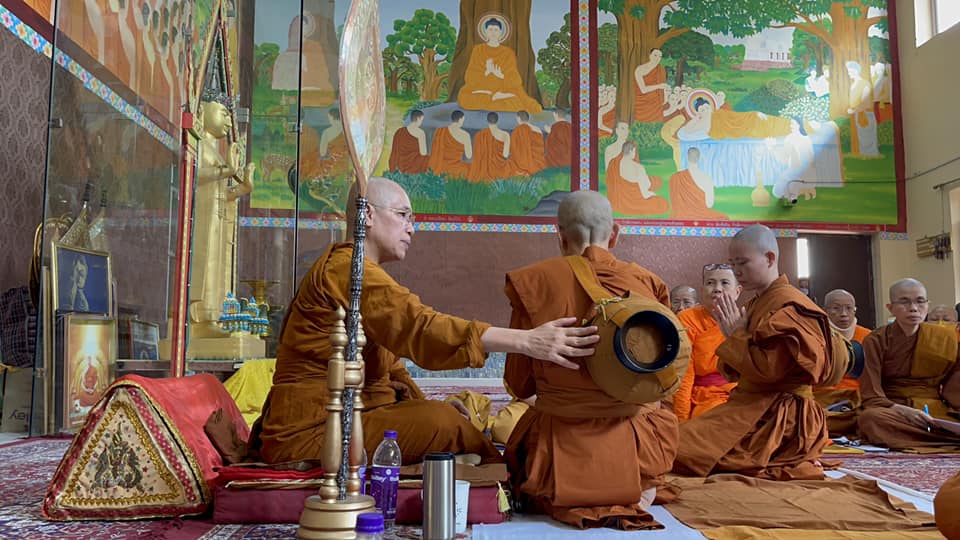
Ven. Tathaloka reminds us, that from 1998 onwards: “All-Theravada Dual Bhikkhuni Ordinations were reinstituted, and began to be offered regularly and consistently, with the Dambulla Bhikkhuni Order in Sri Lanka. Since 2004, this has been so for all the Bhikkhuni Orders in Sri Lanka. And since 2009-2010, so in India, as well as in the West, in Australia and USA, where All Theravada Dual Bhikkhuni Ordinations have been offered consistently and continuously since then.”
Even so, the persistent and often popular narrative (including in supposedly objectively-minded academic institutes) has been that these were framed as “attempts” to revive the women’s Order. Note the dismissive implications of the word. There were differences between these Theravada ordinations and the recent mass ordination of Vajrayana bhikshunis in Bhutan — differences in methodology or scope, and perhaps most significantly, the ordinations in Bhutan were accomplished with the full support of a Buddhist State. However in both circumstances there is something outstanding: gone here is the language about “attempts” to revive the women’s Order. After all, it is much harder to be dismissive, even subconsciously, when one can see for themselves the photos, videos, or in person, hundreds of ordained women walking around.
In any case, and for various reasons, now there seems to be a real sense that the winds have changed. They are blowing in a direction that Buddhist women have not seen in centuries: a reclaiming of spiritual authority – granted to them by the Buddha, fully institutionally-supported and empowered by the superstructure designed by the Buddha himself to work at full capacity for the Buddha Sasana in harmonious collaboration with monastic and lay men and women. This is not power lost; this is a table shared, including both halves of humanity, doubled in size, multiplied in strength. Or at least, this is the perspective of the United Theravada Bhikkhuni Sangha International and its allies and advocates such as the Maha Bodhi Society, with their focus in dedication on upliftment through harmonious collaboration.
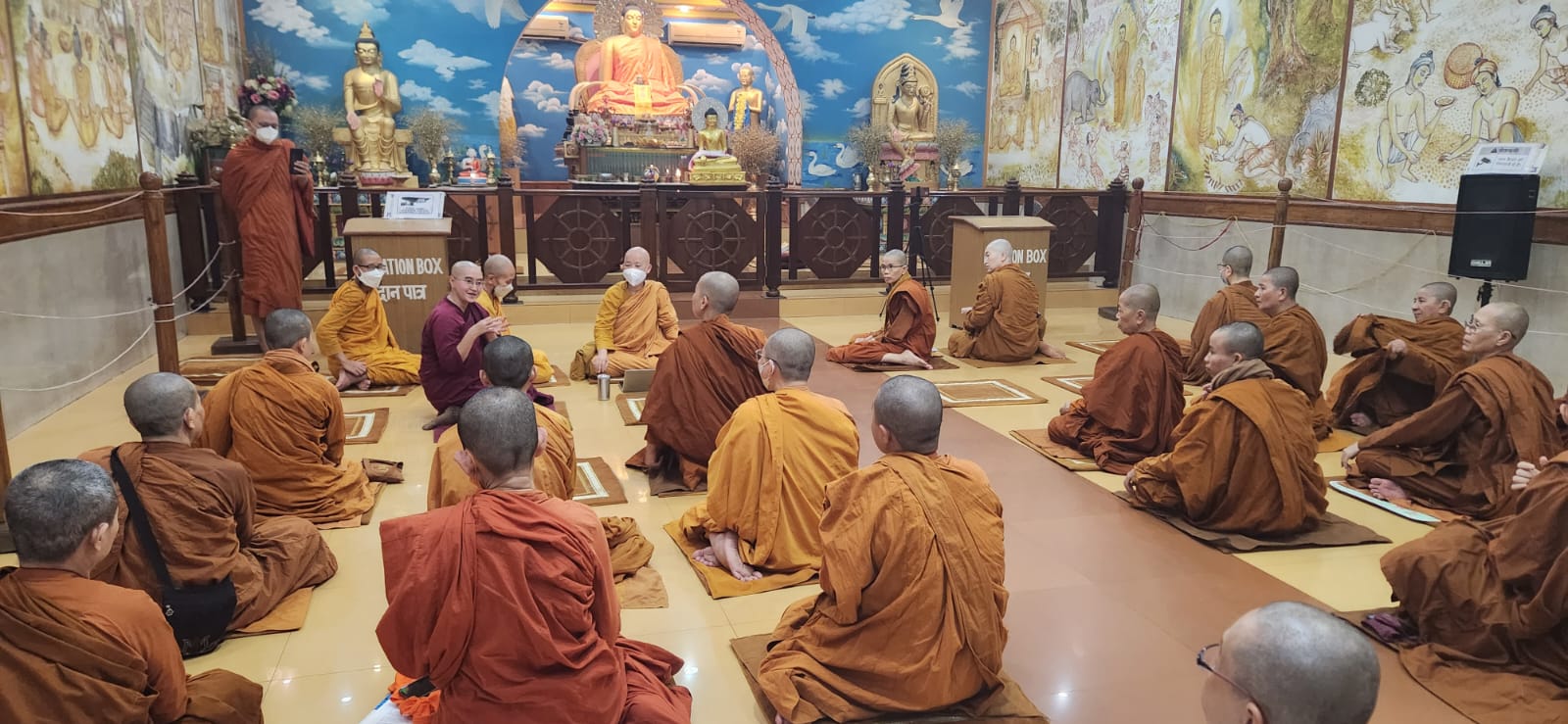
Courtesy of UTBSI and MBSI
Nevertheless, we should not ignore the significant number of leading Theravada bhikkhus who have serious misgivings about this concept of “sharing the table.” Some are sincerely worried about competition. They say it is natural for men to compete with men, but unnatural and undesirable to compete with women. And one of their biggest concerns is what might happen to the bhikkhus if increasing numbers of their most faithful and dedicated women supporters come to be fully ordained. Some are afraid they will be losing their own best supporters. In this regard, one has to question how the early Buddhist Bhikkhu-Bhikkhuni Dual Sangha (Ubhato Sangha), as designed and guided by the Buddha, worked. But perhaps we don’t need to look far. While Mahayana Sanghas may not be a model for Theravada communities in some ways, in other ways we can easily see how even with the presence of a thriving bhikkhuni sangha in East Asia, there is not a lack of both great laywomen and laymen donors and supporters. Support may even be increased by the presence of bhikkhunis, institutionally empowered, as a fully bonafide field of merit, increasing the benefit and blessings of giving.
In my view, this is, perhaps, the next ground to be shifted – what is the place of bhikkhunis, theris and the new mahatheris that, from the modern world’s perspective, deserve to have the same autonomy as their male monastic counterparts.
This has the potential to shift the capabilities of the Sangha and Buddhism as a whole into a new level of empowered capability and engagement, of the Buddha’s teaching and effective practices, brought to bear on pervasive ignorance and causes of suffering in the 21st century, perhaps when our world needs this support most.
See more
United Theravāda Bhikkhunī Saṅgha International (Facebook)
Related features from BDG
Gelongma Dompa (dgeslongma’i sdom pa): The Blessing of Bhikshuni Ordination in Bhutan
Related blog posts from BDG
Summer Solstice Milestone: Bhutanese Nuns receive the Gelongma Vows
Bodhgaya International Theravada Bhikkhuni Ordination January 2019


